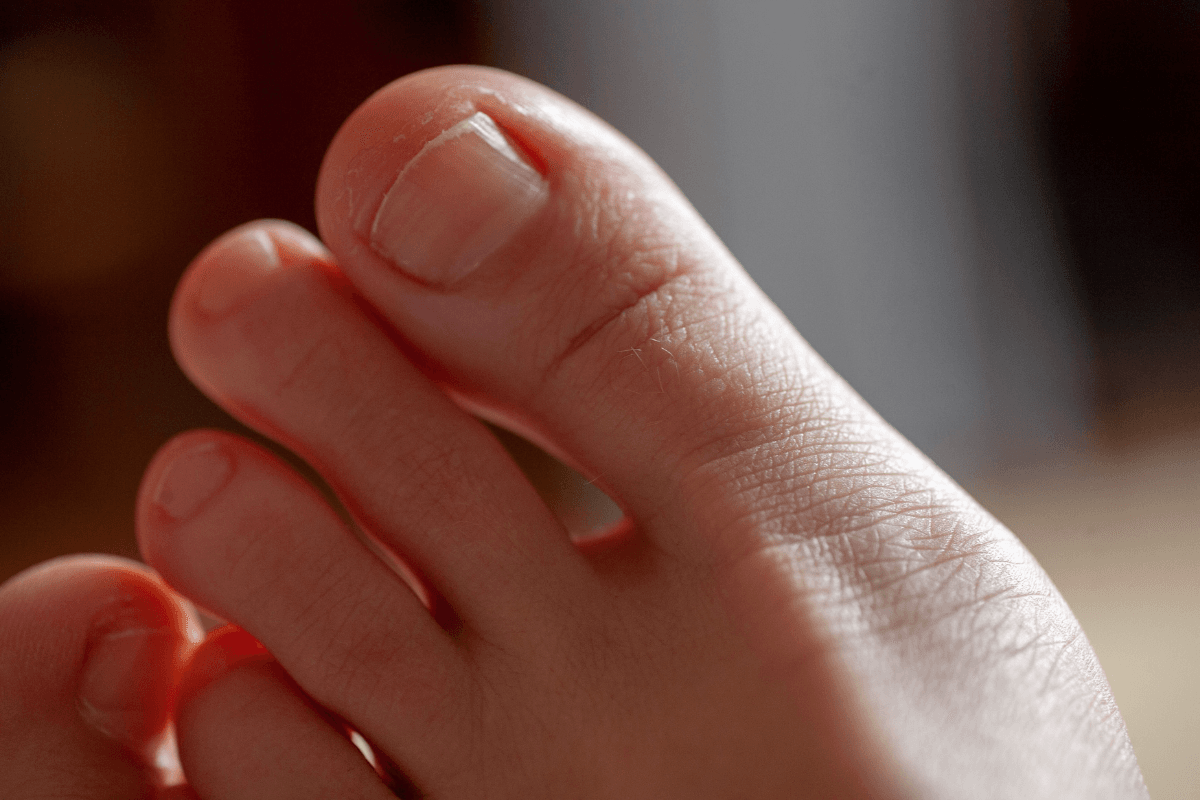The doctor is in! In our Spin Doctor series, we explore hot-button questions about SCI and disability from our peers throughout the province and share answers from healthcare professionals across disciplines.
Have a question of your own? Email thespin@sci-bc.ca to be featured!

Question:
“Why do I always seem to have toe fungus, and how can I treat it naturally?”
Answer:
It’s a question we hear often from peers. We asked for assistance from The Rollin’ RNs—American nurses, Roberta Palmer and Patty Kunze, who write about SCI-related health issues based on their experience as registered nurses who live with paraplegia.
Toe fungus is a fungal infection that gets in through cracks in your nail or cuts in your skin. Left untreated, a fungal toenail infection could spread to other toenails, skin, or even your fingernails. Affected nails will appear discoloured to a brownish-yellow, and they may become thick and brittle. They can even separate from the nail bed. These infections are more than just a cosmetic embarrassment. For some, they can become a serious health concern. “If you are diabetic or immune-compromised, it’s important to get foot fungus issues under control,” says Dr. Pamela Ng, a dermatologist at the Cleveland Clinic. “The fungal infections can cause a breakdown of the skin and lead to conditions like cellulitis or foot ulcers.”


Why toe fungus happens with SCI, diagnosing it and common treatments
People with SCI appear to be susceptible to toe fungus for a number of reasons. We have little or no sensation in our feet that would otherwise signal the onset of infection. We also tend to spend many hours sitting, which can lead to swelling in our feet. Another issue is poor circulation in the legs and feet, which can slow wound healing. A weakened immune response may also play a role. And finally, it can also be difficult for some of us to reach our feet for daily care.
To accurately diagnose toe fungus, your doctor may refer you to a podiatrist or a dermatologist. A common treatment option for confirmed cases is a prescription medication that you take daily for two to three months. However, it can negatively interact with other medications and compromise liver function. Fortunately, there are also topical home remedies to treat nail fungus. These might be worth trying because of the low risk of side effects and drug interactions, but keep in mind they take much longer to work. And remember that an infected nail needs time to grow out which could take weeks.
At-home topical remedies that may work
Vicks VapoRub is a topical ointment originally designed for cough suppression. Its active ingredients, camphor and eucalyptus oil, may help treat toenail fungus. A 2011 study found in The Journal of the American Board of Family Medicine that Vicks VapoRub had a “positive clinical effect” in the treatment of toenail fungus. To use, apply a small amount to the affected area at least once a day.
Tea tree oil is an essential oil with antifungal and antiseptic properties. According to the US National Center for Complementary and Integrative Health, some small-scale clinical studies showed that tea tree oil might be effective against toenail fungus. To use, paint the tea tree oil directly onto the affected nail twice daily with a cotton swab.
Oregano oil is an essential oil that contains thymol. According to a 2016 review, thymol has anti-fungal and antibacterial properties. To treat toenail fungus, apply oregano oil to the affected nail twice daily with a cotton swab. One wheelchair user that we know of was able to combat her nail fungus using daily over-the-counter products. One was a foot soap containing tea tree oil, which she used to wash her feet in the shower. The other was a liquid nail polish with tea tree and oregano oil. She applied the polish after showering, allowed it to sit on her nails for about 15 minutes, and then removed it before putting on her socks and shoes. Over the course of several weeks, her nails grew out pink and healthy, without any need to take prescription drugs.
Fungal prevention strategies
The best strategy to avoid toe fungus grief is to prevent it from getting a foothold in the first place. Strategies that may help prevent toe fungus include:
- Inspecting your feet daily or as often as possible is essential. So too is keeping your feet clean and dry, paying close attention between and under your toes where moisture can lead to fungus. If your skin becomes dry, flaky, or cracked, rub your feet with a good moisturizer—but remember not to apply between the toes to avoid unwanted moisture.
- Wearing shoes that breathe and don’t trap sweat inside of them
- Changing your socks often, and wearing socks that wick moisture away from your skin
- If you have an SCI, resist the temptation to go barefoot to avoid skin abrasions
- Treating cuts and sores as soon as they appear on your feet. They can become easily infected and tend to heal at a much slower rate because of your SCI.
Toe fungus is hard to treat and has a high reoccurrence rate. So it’s important to treat the current infection and take steps to avoid getting it again. Keep in mind that each one of us is unique. Consult with your healthcare provider for diagnosis and treatment for persistent toe fungus to determine the best course of action for you.
It’s all good, so keep on rollin’. You can find other SCI-related features and information written by The Rollin’ RNs at rollinrns.com or facebook.com/rollinrn.
This Spin Doctor article was featured in The Spin Fall 2021



